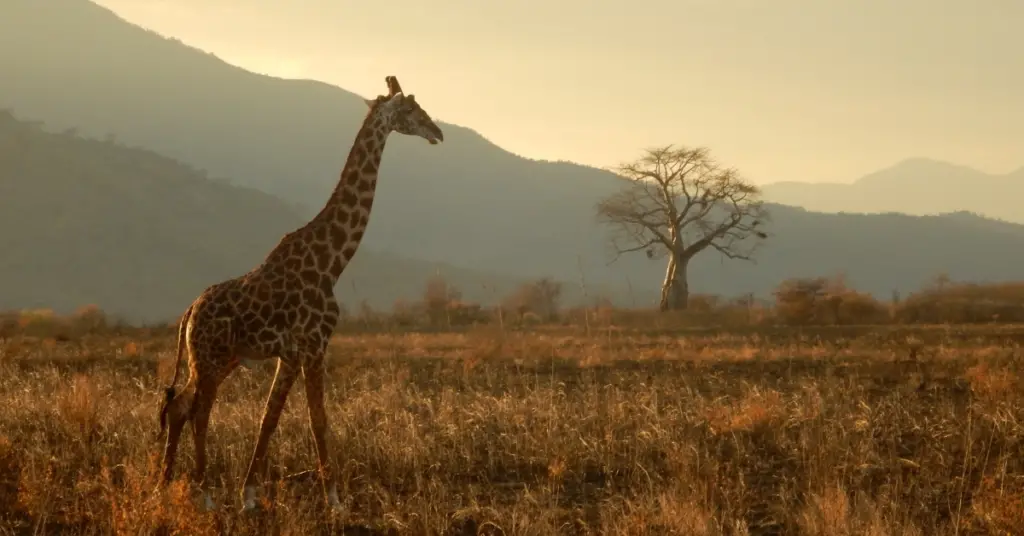Giraffes have endemic distribution in Africa.
Historical distribution of Giraffe
Widespread in North and West Africa, including the Sahara, until the Neolithic. Rock drawings, petroglyphs and skeletons confirm their presence on the banks of the Nile and the plateau of Messak until 4000 BC and later in Western Sahara and Mauritania.
Historically, giraffes were widely distributed in the Sahelian regions of West Africa and in Senegal in northern Guinea and Mauritania passing from Mali to Chad, to the Central African Republic, to Sudan (west of the Nile), and to Congo.
Rothschild’s Giraffes occurred in SW Eritrea and W and SW Ethiopia, south through Sudan, east of the Nile R., Uganda and Kenya. Reticulated Giraffes ranged from S Ethiopia south through Kenya, east of the Rift, and adjacent S Somalia to the north of the Tana R.
Masai giraffes were present in Kenya and most of Tanzania north of Rufiji R.Thornicroft giraffes have only been found in Luangwa Valley in Zambia. The former area of origin of the 2 southern subspecies (giraffe and angolensis) also covered Namibia, the semi-desert areas of Kaokoland.
Although some have proposed that Giraffe never occurred south of the Komati Indigenous drawings suggest that the giraffe was once found in parts of the South. However, more than 300 years, the limit of their range was reduced by almost 900 km.
Current Distribution of Giraffe
Today no Giraffes survived in North Africa, though some may have remained in Morocco as late as 600 AD. The beginning of the 20th century marks the big decline of giraffes in the West African region. The only surviving population in West Africa is in SW Niger, an area of approximately 15,000 km2, delineated as the ‘giraffe zone’ in a broader Biosphere Reserve. This population coexists with agricultural communities and seasonally migrates across their range in search of available forage.
During the rainy season (June-September), the animals are found on the plateau of Kouré and Fandou, but during the dry season, they move towards DallolBosso. The Kordofan Giraffe is still present in N Cameroon, S Chad, and the Central African Republic (mainly Manovo–Gounda–St Floris N. P.). To the east of this, there is a lack of information, no information is available from Sudan, west of the Nile.
They remain in Garamba N.P. in northeastern DR Congo. The Nubian/Rothschild giraffe survives in southern Sudan and Bandingilo Reserve, but is extinct in Dinder N. P., SW Ethiopia, Uganda (Murchison Falls N. P. and Kidepo Valley N. P.) and in Kenya; it is now extinct in the north and in Eritrea.
The Reticulated Giraffe still occurs in S Somalia and Ethiopia, and occupies some of its historical range in N Kenya, mainly outside protected areas, in Tanzania, as well as in other protected and unprotected areas, they have suffered declines.
Masai giraffes were introduced to Rwanda. The Thornicroft’s giraffe is still found in large numbers in the Luangwa Valley in Zambia. Having been reintroduced to many parts of the range from which they were extirpated, giraffes in Angola and South are currently common inside and outside many protected areas in Namibia, Botswana, Zimbabwe, and South Africa.
In Angola, the giraffes that were historically found in the southwest of the country had completely disappeared in the 1940s, when the southeastern population is assumed to be now extinct. Angolan Giraffe still survived in small numbers in Sioma Ngwezi in SW In Mozambique, some individuals of the southern giraffe are still found at Coutada, next to Kruger N. P.
Giraffes have been introduced to Swaziland with stock from South Africa and Namibia, and have also been introduced to many reserves in South Africa, including KwaZulu-Natal and the Eastern Cape.

Erzsebet Frey (Eli Frey) is an ecologist and online entrepreneur with a Master of Science in Ecology from the University of Belgrade. Originally from Serbia, she has lived in Sri Lanka since 2017. Eli has worked internationally in countries like Oman, Brazil, Germany, and Sri Lanka. In 2018, she expanded into SEO and blogging, completing courses from UC Davis and Edinburgh. Eli has founded multiple websites focused on biology, ecology, environmental science, sustainable and simple living, and outdoor activities. She enjoys creating nature and simple living videos on YouTube and participates in speleology, diving, and hiking.
- WILDLIFE THEMED T-SHIRTS
Cute Hedgehog Embroidered: Love Wildlife, Protect Nature Wildlife conservation tees
$35.00







